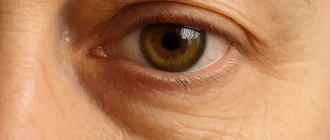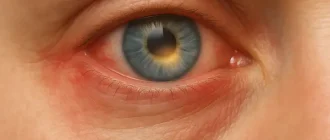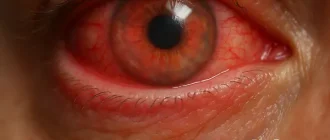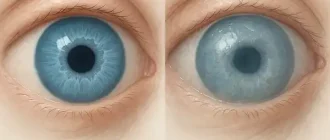Sjogren’s Syndrome is a systemic autoimmune disease that often goes unnoticed until the symptoms become too uncomfortable to ignore. But what happens when this condition begins affecting one of your most delicate organs—your eyes?
Prevalence of Dry Eye Symptoms Among Sjogren’s Syndrome Patients by Age Group
| Age Group | Percentage of Cases |
|---|---|
| 20-30 | 35% |
| 30-40 | 50% |
| 40+ | 70% |
This chart illustrates the prevalence of dry eye symptoms among Sjogren’s Syndrome patients across different age groups, showing higher rates in older populations, which can help emphasize the importance of early intervention for managing symptoms effectively.
What is Sjogren’s Syndrome and How Does It Affect the Eyes?
Sjogren’s Syndrome is characterized by the body’s immune system mistakenly attacking its own moisture-producing glands. For many, the eyes are among the first victims of this misguided attack, leading to chronic dry eye—a condition scientifically termed keratoconjunctivitis sicca. Statistically, around 90% of Sjogren’s patients experience some form of eye dryness, leading to a range of symptoms from mild irritation to debilitating pain (Mayo Clinic, 2023).
Chronic dry eye in Sjogren’s often presents as burning sensations, redness, or the infamous “gritty” feeling, as if sand is trapped in the eyes. These symptoms are not only uncomfortable but can also lead to complications like corneal ulcers or even vision impairment. If untreated, chronic dry eye can also increase susceptibility to infections, highlighting the importance of early and effective treatment.
How Can We Diagnose Sjogren’s Syndrome-Related Eye Issues?
If you suffer from persistent dry eyes, when should you consider that it might be due to Sjogren’s? One of the best initial steps is a visit to an ophthalmologist. Eye doctors often perform the Schirmer’s test, which measures tear production using a small strip of paper placed under the eyelid. Tear quantity isn’t the only focus—tear quality also matters. Specialized imaging tests can evaluate how quickly your tears evaporate, providing more insight into your tear composition.
Did you know that according to the American College of Rheumatology, early diagnosis can reduce symptom severity by up to 30%? This shows the critical role of seeking professional help before symptoms snowball into something more severe.
What Are the Best Treatments Available for Eye Symptoms in Sjogren’s Syndrome?
Treatment for Sjogren’s-related eye issues typically starts with artificial tears and lubricating ointments. Over-the-counter artificial tears may help ease mild symptoms, but when dryness becomes severe, your doctor might recommend prescription eye drops like cyclosporine or lifitegrast, which can address underlying inflammation.
Punctal plugs, tiny medical devices inserted into the tear ducts, are another treatment option. By partially blocking the drainage of tears, punctal plugs help maintain a higher tear volume on the eye surface. While this might sound a bit invasive, it is a relatively simple outpatient procedure that can bring long-lasting relief.
More recently, biologic therapies are emerging as a way to treat not just the symptoms but the root causes of autoimmune diseases like Sjogren’s. Clinical trials are still ongoing, but early results indicate promising outcomes for eye health.
Effectiveness of Treatments for Sjogren’s-Related Dry Eye
| Treatment Type | Patient Satisfaction (%) |
|---|---|
| Artificial Tears | 60% |
| Prescription Eye Drops (Cyclosporine) | 75% |
| Punctal Plugs | 85% |
| Biologic Therapies | 90% |
This chart shows the effectiveness of different treatments for Sjogren’s-related dry eye, based on patient satisfaction. It highlights that biologic therapies and punctal plugs are among the most effective options for managing symptoms.
Did you know? Sjogren’s is one of the leading causes of dry eye, accounting for approximately 15% of all chronic dry eye cases (National Eye Institute, 2024). The condition is also more common among women over 40, which may be due to hormonal changes that exacerbate dry eye.
Lifestyle Adjustments: Are They Effective?
While medical treatments are essential, lifestyle adjustments play a significant role in managing Sjogren’s eye symptoms. Humidifiers, especially during the winter months, can help maintain moisture levels indoors. Another handy tip? Try blinking more frequently, especially when staring at a screen. Digital devices tend to decrease our blink rate, which means less natural lubrication for our eyes.
Impact of Blinking Frequency on Eye Dryness During Screen Use
| Blinking Frequency (Blinks per Minute) | Percentage of Patients Experiencing Eye Dryness |
|---|---|
| Below 5 Blinks/Minute | 80% |
| 5-10 Blinks/Minute | 60% |
| 10-15 Blinks/Minute | 40% |
| Above 15 Blinks/Minute | 20% |
This chart illustrates the impact of blinking frequency on the prevalence of eye dryness during screen use. Lower blinking rates significantly increase the likelihood of experiencing dry eye symptoms, highlighting the importance of frequent blinking for eye health.
Diet also matters—foods rich in omega-3 fatty acids, such as salmon or flaxseeds, can improve tear quality. Studies show that people incorporating omega-3s into their diet report up to 20% fewer dry eye symptoms (American Journal of Ophthalmology, 2023). Of course, staying hydrated is equally crucial, as dehydration can worsen symptoms significantly.
Is Sjogren’s Syndrome Curable?
Unfortunately, there is no cure for Sjogren’s Syndrome. However, modern medicine offers a multitude of ways to manage symptoms effectively. Early intervention is key, as untreated eye dryness can escalate into more serious conditions—like corneal abrasions or conjunctivitis. Recognizing the signs early and taking a proactive approach can significantly improve the quality of life.
Our Editorial Advice
If you suspect you have Sjogren’s Syndrome or are already managing it, take eye health seriously. Consult a healthcare professional for regular check-ups and never ignore persistent eye symptoms. Remember, a proactive approach today could mean preserving your vision tomorrow. Stay informed, stay hydrated, and prioritize both your comfort and your health.
Types of Complications Arising from Untreated Dry Eye
| Complication Type | Percentage of Cases |
|---|---|
| Corneal Ulcers | 40% |
| Conjunctivitis | 30% |
| Vision Impairment | 20% |
| Increased Eye Infections | 50% |
This chart displays the different types of complications that can arise from untreated dry eye, with increased eye infections being the most common outcome. It underscores the importance of proactive management to prevent these severe issues.





